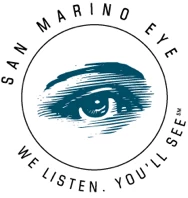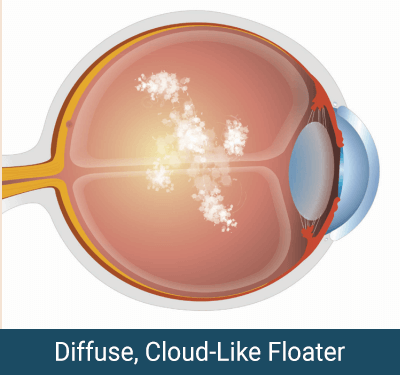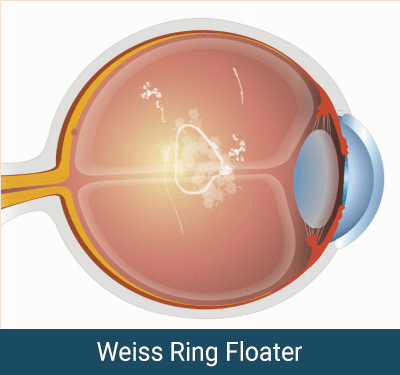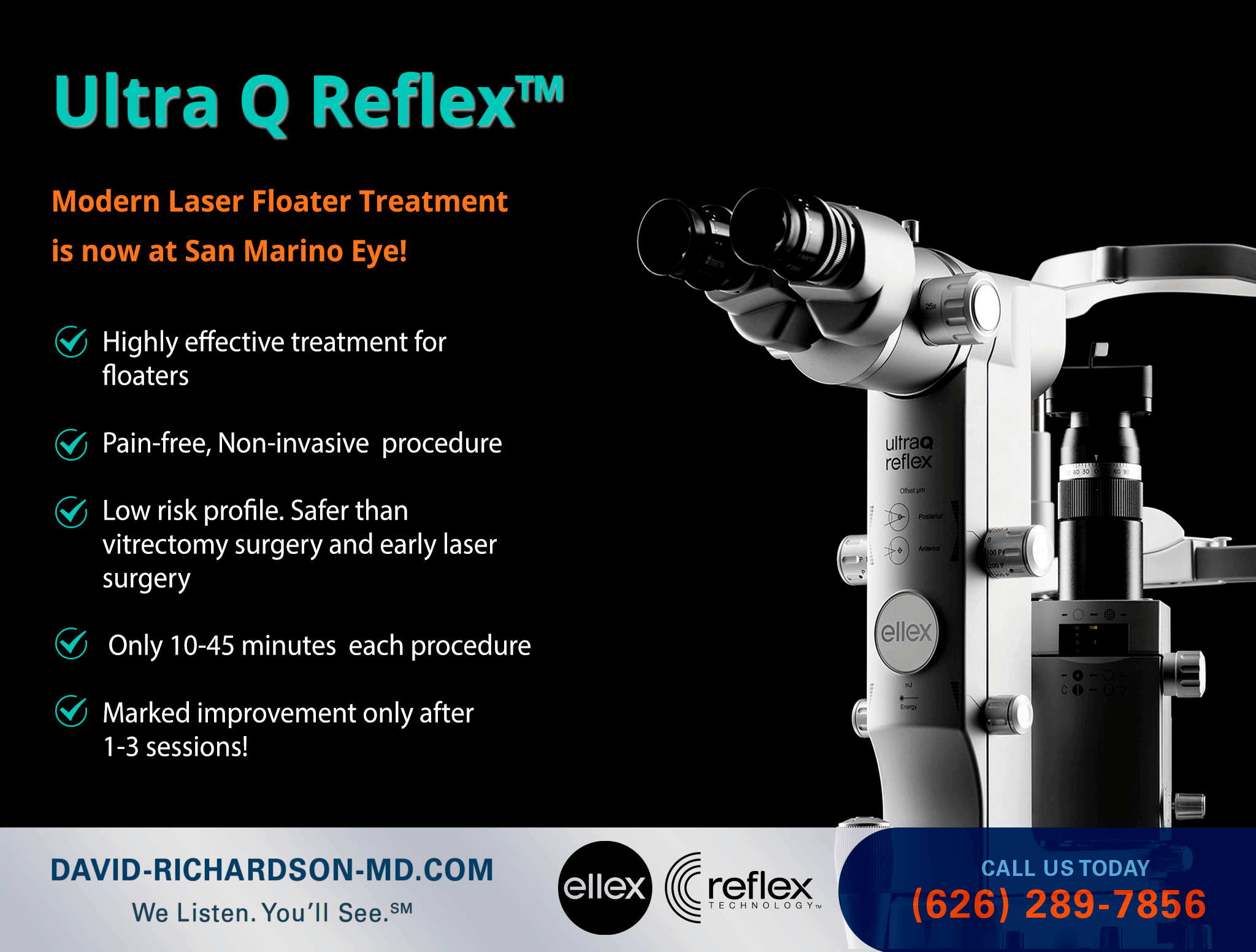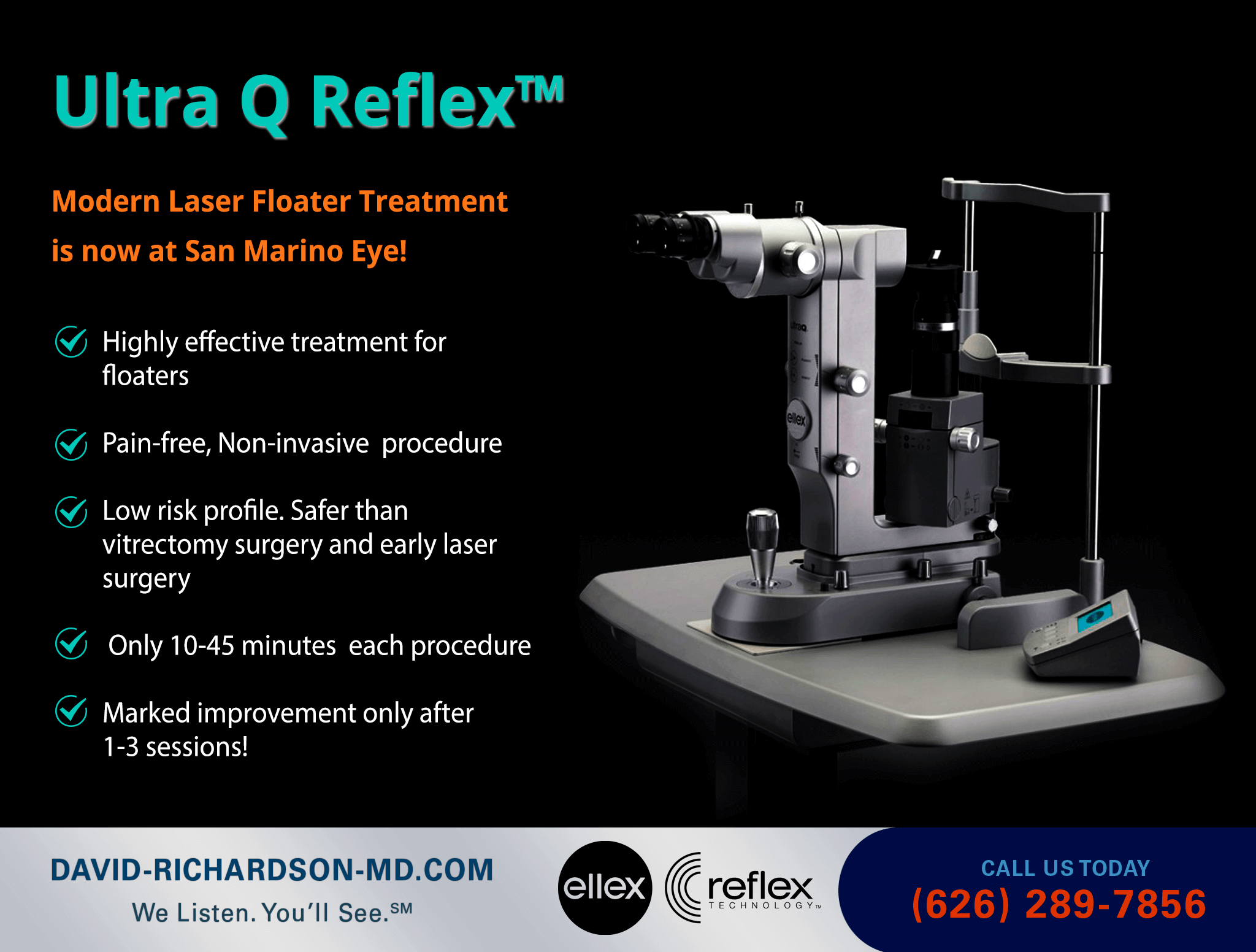What Are Eye Floaters?
⯈Facts About Floaters ⯈Eye Floaters Causess ⯈Dangers of Floaters ⯈Types of Eye Floaters ⯈Treatment Options
What Are Eye Floaters? | Facts About Floaters
Floaters are small pieces of “debris” that float in the eye’s vitreous humor. The vitreous is a gel-like material inside the eye. The “debris” is composed of collagen fibers of the vitreous humor that have collapsed and binded together to form clumps and knots. They cast shadows on to the retina (the light-sensitive tissue layer at the back of the eye). It is these shadows that are commonly referred to as “eye floaters.” They can appear as little “cobwebs,” specks, spots, threadlike strands, or squiggly lines moving along your line of vision.
Eye Floaters Causes
Eye floaters often result from the natural process of vitreous deterioration. They are more likely to develop as we age (age 50 – 75) and are more common in people who are very nearsighted, have diabetes, or who have had eye trauma and cataract operation.
The vitreous humor is the clear, jelly-like substance in the main chamber of the eye, located between the lens and the retina (the light-sensitive tissue layer at the back of the eye).
At a young age, the vitreous is entirely transparent. Over time as the eye ages, the vitreous humor can degenerate, losing its form and liquefying. Without the stable vitreous humor, the collagen fibers collapse and bind together to form clumps and knots. These fibers cast shadows on the eye’s retina. It is these shadows that are commonly referred to as “eye floaters.”
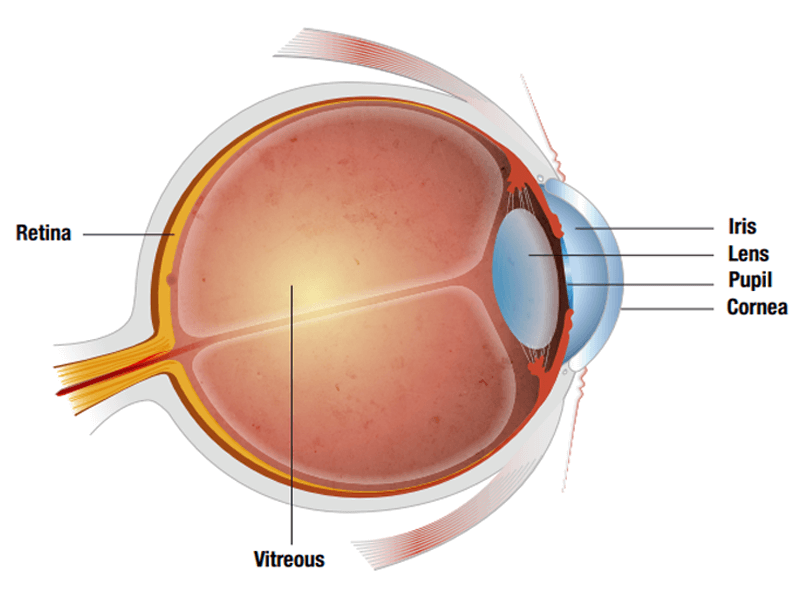
Are Eye Floaters Harmlesss or Dangerous?
Virtually every individual has experienced ‘floaters’ during their lifetime. For most, this event is a minor, harmless, and short-lived inconvenience. They can adapt. But for some, the shadows can be too distracting, causing constant frustration, anxiety, and even depression. Floaters may even appear in the peripheral vision giving the sensation of someone or something approaching from behind or from the side. Occasionally, floaters may be associated with potentially blinding conditions such as retinal tears, retinal detachment, and vitreous hemorrhage or inflammation.
When To See a Doctor:
Anyone who notices new floaters should undergo a thorough eye examination by an ophthalmologist.
For those with a prior history of floaters:
- A sudden increase of floaters
- Flashes of light or Flashing lights
- Curtain or shade “coming down over one eye.”
- Darkness one any side of your vision
These symptoms may be indicative of a retinal detachment.
Types of Eye Floaters
There are several different types of floaters, including:
Cobweb / Fibrous Strand Floaters are most common in young people; these thin, dense floaters can appear as multiple dots and string-like cobwebs and are a result of clumping of the collagen fibers of the vitreous. Depending on their size and location, they may be treatable with laser floater removal.
Diffuse, Cloud-Like Floaters are caused by the natural aging process. While this type of floater can sometimes be treated with laser floater removal, they often require a surgical procedure called “vitrectomy” to obtain satisfactory results.
Weiss Ring Floaters are large and ring-shaped. They form as a result of Posterior Vitreous Detachment (PVD). This dense, fibrous floater is usually located safely away from the crystalline lens and the retina. Because of this, it can often be treated safely and effectively with laser floater removal.
Eye Floaters Treatment Options
How To Get Rid of Floaters In Your Vision
Depending on your diagnosis, there are several forms of treatment available.
- Do Nothing and Continue to Observe – Floaters may get better over time.
- Vitrectomy Surgery – Traditionally, more severe cases of eye floaters are treated with an invasive surgery called Vitrectomy. Performed in the operating room, it involves removal of all or part of the vitreous humor. This surgery carries a significant risk of bleeding and infection and can also result in cataract formation. On average, it takes 1-2 hours to perform. While considered to be highly effective in reducing floaters, Vitrectomy is associated with complications[2][3] such as a small but significant risk of bleeding, infection, retinal tear. Most worrisome, vitrectomy often results in cataract formation.
- YAG laser Vitreolysis – This is a non-invasive procedure that uses a Yag laser beam to break up/ vaporize the floaters — first introduced in the eighties with reports of limited success primarily due to limitations of technology that were not optimized for the procedure.
- Modern Laser Floater Treatment (LFT) – This is an improved YAG Laser Vitreolysis procedure using a technologically advanced platform such as the Ultra Q Reflex™. → Learn more about Modern Laser Floater Treatment
[2] Delaney YM, Oyinloye A, Benjamin L. Nd:YAG vitreolysis and pars plana vitrectomy: surgical treatment for vitreous floaters. Eye (Lond). 2002;16(1):21–26.
[2] Schulz-Key S, Carlsson JO, Crafoord S. Long-term follow-up of pars plana vitrectomy for vitreous floaters: complications, outcomes and patient satisfaction. Acta Ophthalmol. 2011; 89(2):159–165.
Ultra Q Reflex™
Yag Laser Vitreolysis. The safer, non-invasive treatment.
Dr. David Richardson uses Ultra Q Reflex™—the latest technology optimized for Laser Floater Treatment. Touted as the “floater-treatment laser,” its superior Reflex™ Technology provides accurate visualization of the floaters and opacities. It delivers precise, well-controlled energy treatment that breakups and vaporizes the floaters. Patients of Dr. Richardson can feel secure that they are getting the best and safest laser floater treatment possible.
Contact Us to See If LFT Is for You
Dr. David Richardson offers Laser Floater Treatment (LFT) as an outpatient procedure in his San Marino Eye office. LFT can be performed on the same day as most examinations and each procedure takes only 10-45 minutes. LFT using Ultra Q Reflex™ is a gentler laser vitreolysis treatment for eye floaters. Contact Dr. David Richardson immediately to see if LFT is for you.
Call today to schedule an appointment with
Dr. Richardson at (626) 289 7856
